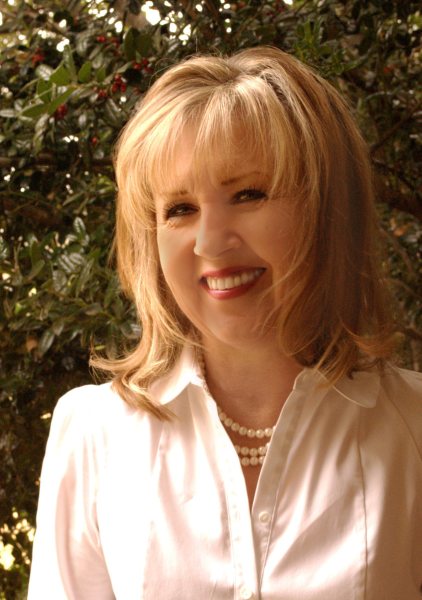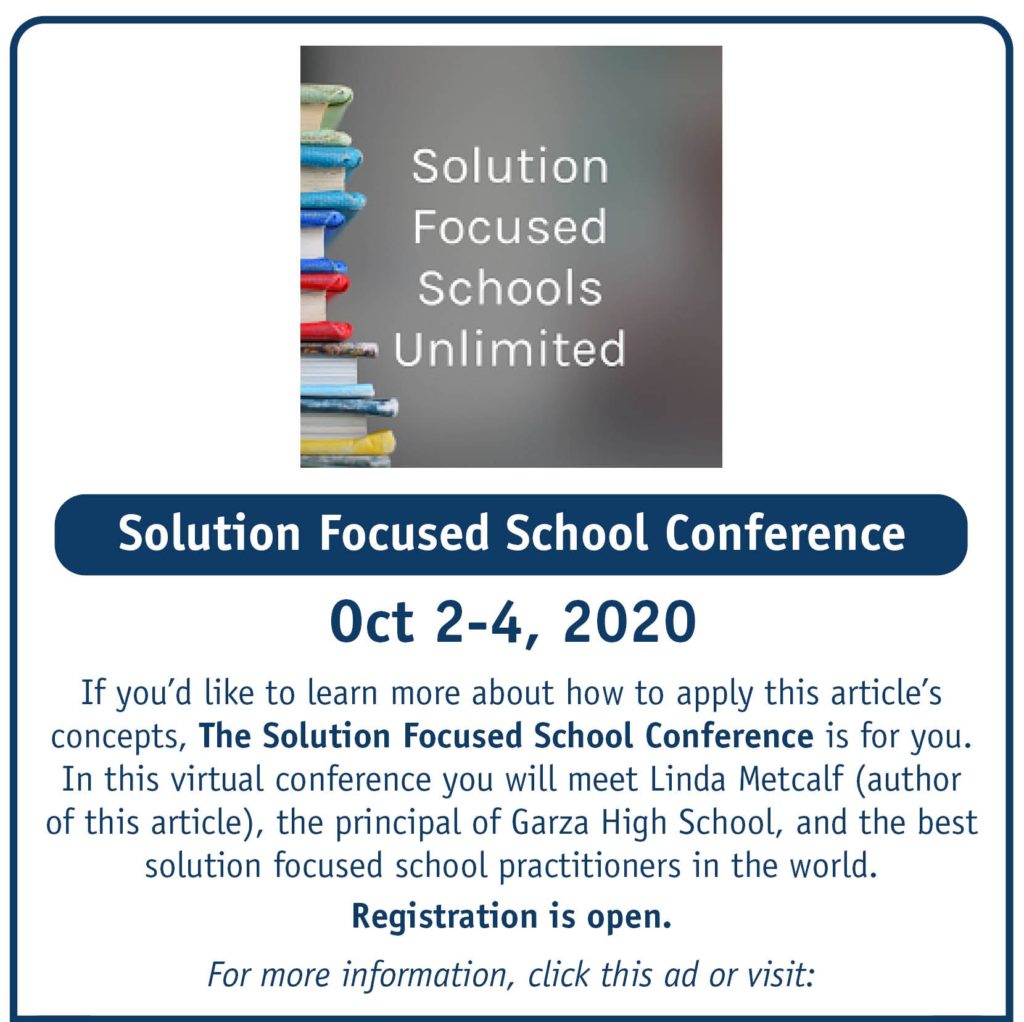Changing Our Mindset: The Challenges of Working With At-Risk Students in the School Setting
By Linda Metcalf, M.Ed., Ph.D.
To launch our ongoing conversation about the challenges of working effectively with at-risk students in the school environment, and the challenges faced by these students and their educators, I begin with a story about a school whose student body is composed entirely of at-risk teenagers.
A Tale of Possibilities, Support, and Belief
This is the tale of Gonzalo Garza Independence High School, in Austin, Texas, housed in an old school building intended to manage students other schools did not want or could not handle. Little hope was conveyed to the principal hired for the job, with few expectations for student success. Many of the students had been previously expelled or suspended, some had become unintentionally pregnant, and some gone to jail or juvenile corrections for a time. Most had experienced emotional or behavioral difficulties, or for myriad reasons had simply been deemed difficult to teach.
Yet, attending Garza changed their lives. In spite of their often marginalized lives, a return to each Monday morning was a welcome back for these students, who maintained greater attendance than they had at their prior schools. Each Monday they returned to a safe and predictable routine, with food, attention, support, and positive relationships that may not have been available over the weekend, or at other times in their lives.

Many of these students would go on to become first generation high school graduates who never thought they would get that far, a belief sometimes fueled by prior teachers and schools, and sometimes even by their parents. Poverty, anxiety, poor mental health, substance abuse, violence, systemic racism in many cases, and other circumstances haunted these students. But they still came back to school each Monday, feeling welcomed and hearing positive expressions of support and encouragement, words these students had rarely heard, but desperately craved.

Garza High School, part of the Austin Independent School District, was opened in 1993 as an alternative school dedicated to helping students at-risk for educational failure or dropping out. Their prior schools seemed to assume they would fail, so expectations were low. Garza, however, was different. Here, students received positive attention and connection in the form of encouragement and the expectation that they would succeed. Expectations were high and were kept high, with flexibility, resources, and support provided to the teachers to help them find a way to reach and teach and inspire students to achieve. As a result, this public high school achieved what others could not. Today, Garza is flourishing and continues on its path of helping at-risk students, with graduation rates of around 80 percent.
I hope readers of this article find the story of Garza High inspirational and thought provoking, illustrative of what can be done. It represents part of a solution for how to work effectively and collaboratively with at-risk students, and, it is working. Unfortunately, when it comes to at-risk students, the school is in the minority.
The Need to Approach At-Risk Students Differently
At-risk students often do not fit the model of the type of student teachers find easiest to teach. These students come across at times as disrespectful, with an uncaring or disinterested attitude. Nevertheless, many of these students, in spite of their chaotic lives, try to attend school. The mere fact that they come to school is, itself, a behavior to notice and applaud, given the circumstances of their lives.
Unfortunately, it is often the case that teachers in training are taught the same classroom management techniques that were taught 20 or more years ago. When those strategies don’t work, especially with at-risk students, we tend to put the blame on the students themselves, rather than on the school administration or policies and practices that significantly contribute to student failure. Although trying their best, under those circumstances teachers may eventually lose their passion. Many teachers give up or simply teach “as usual” with an at-risk student, with little expectation of success. The message sent to the student may be that the teacher has no time for them, and they will never amount to much anyway. Teachers may become frustrated, wondering why they should try if a student doesn’t—an unspoken, but perhaps familiar, message that may maintain a student’s negative mindset.
Educators at Garza High School recognize that the needs of at-risk students are different from those of less challenging students. Garza teachers are chosen, not only for their diplomas and training, but also for their mindset and their passion for reaching and teaching all students, as if anything is possible. The teachers at Garza are given extensive training on diversity, multicultural issues, and the behavioral and mental health problems faced by marginalized students. While most teachers enter the field trained to talk with students, sometimes, when students threaten their authority and frustrate their expectations, teachers instead talk at them. Teachers at Garza learn the importance of talking with students at all times, and are given the freedom to think outside the box in how to reach and teach them. Yet, they are still pushed to hold the bar high for excellence in student achievement. They never stop trying to find a way into a student’s mind and heart, and encourage and stir their desire to achieve. And, they have administration backing all the way.
Effective Education with At-Risk Students Requires a New Mindset
At-risk students face difficulties in life and in the school environment that marginalize and disengage them from education. They get in trouble at school, skip school, curse at teachers, disrupt classrooms, and perform poorly on state tests, and when they do there is more trouble heading their way. Left to their own devices, some of those students enter the “school-to-prison-pipeline,” described by the ACLU as “a disturbing national trend wherein children are funneled out of public schools and into the juvenile and criminal justice systems. Many of these children have learning disabilities or histories of poverty, abuse, or neglect, and would benefit from additional educational and counseling services. Instead, they are isolated, punished, and pushed out.”1

While it is clear that we must provide at-risk students with additional resources, more time in school, and more support, there is also an over-arching need for teachers and administrators to be educated and re-educated in how to work successfully with these youths, working to build educational environments that recognize and engage, rather than disengage. Back to Garza High School. From the beginning, students commit to a Code of Honor where they agree to be respectful and cooperative, to do their best, and not fight. It’s a simple code of expectations. But, here’s another step: their teachers also pledge a Code of Honor, promising to always see the capacity within each student, regardless of their background, circumstances, or previous academic performance. The teachers are encouraged to respect, and look beyond the labels often assigned to the student, and instead see the possibilities that exist in every student. The teacher’s mission is to find a way to reach and teach students, not only so they learn but also so that they succeed, period. And, if that doesn’t work, they apologize to the student, and, try again.

Hit the Re-Set Button NOW
Schools have a chance today, perhaps unlike any other time in our recent history, to hit a re-set button in education, and perhaps especially so for at-risk students. With school being taught remotely due to the restrictions imposed by Covid-19, and educators scrambling to figure out how to teach virtually, so also comes the chance to re-connect with at-risk students and get to know them, and their strengths and needs. The chance to re-set how we talk to and think about students, what we expect from students, and how we help students to believe in themselves is presented to us, today, in real time. The “silver lining” of Covid-19 is that it has provided both time and the necessity for school administrators and teachers alike to review school policies and approaches to teaching, find new ways to reach student and teach online, and prepare to re-set practices when the schools reopen for in-person teaching. Let’s all take a look again at what Garza High School offers at-risk students and, as we do so, set the stage for real engagement that sends a message that inside each student, at-risk or not, is a capable student wanting and waiting to excel. And let it be our jobs to help students meet that goal, every day.
- https://www.aclu.org/issues/racial-justice/race-and-inequality-education/school-prison-pipeline

Linda Metcalf, M.Ed., PhD, LMFT
Linda Metcalf, M.Ed., PhD, LMFT is the Director of Graduate Counseling Programs at Texas Wesleyan University in Fort Worth, Texas. She is a former middle school teacher and school counselor. She provides professional development to schools seeking a solution focused climate.
She is the author of eleven books including Counseling Toward Solutions (1995, 2008, Wiley, 2019, KDP), A Field Guide to the Solution Focused School (Wiley, 2008),Parenting Toward Solutions (1997, Prentice Hall), The Miracle Question, (2004, Crown House, UK) Marriage and Family Therapy: A Practice Oriented Approach (Springer) 2011, and Solution Focused Narrative Therapy (Springer) 2017.
She has presented extensively in the United States, Australia, Japan, Newfoundland, Germany, Scotland, England, Norway, Amsterdam, Singapore, UK, Canada, Thailand and more. She is Past President of both the Texas Association for Marriage and Family therapy and the American Association for Marriage and Family Therapy. She is the creator of the Solution Focused Schools Unlimited podcast. She is currently President of the Texas Association for Marriage and Family Therapy. She lives in Fort Worth, Texas with her husband Roger. Together, they are proud parents of three adult children, Roger Jr., Kelli and Ryan and two golden retrievers, Ranger and Ringo.



